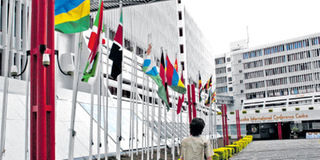Meeting cites additional reasons for falling EAC trade

What you need to know:
This has been compounded by scant knowledge of potential markets within the region and production of similar products, leading to low demand.
Nairobi. High cost of doing business and low quality of products have been cited as among reasons for falling intra-regional trade in East Africa.
This has been compounded by scant knowledge of potential markets within the region and production of similar products, leading to low demand.
Speakers at the annual EAC secretary-general’s forum concurred that traditional barriers were not the only cause of declining intra-regional trade. The gathering in Nairobi is aimed at promoting market-drive integration.
They said despite improved transport infrastructure, the East African Community (EAC) bloc was still notorious for high cost of transacting business across borders.
“The high cost may have discouraged some traders from moving goods from one country to another,” said Ms Joyce Kimaro, a senior advisor with GiZ programmes at the EAC headquarters in Arusha.
Another issue is information gap with regard to available markets within the region. Some countries prefer to import goods from abroad due to “poor” quality of products manufactured in the region.
Ms Kimaro noted that trade barriers among the six EAC partner states could be reduced significantly if national and regional laws were harmonised.
East African Business Council (EABC) executive director Lilian Awinja confirmed that intra-EAC trade has been on a downward trend.
“We prefer to trade with the rest of the world than among ourselves. There are certainly some bottlenecks,” she said.
Mr Kenneth Bagamuhunda, EAC director general in charge of customs and trade, said trade in the region was facing numerous challenges, but added that significant progress had been made.
This includes improved cross-border trade following the construction of 15 one-stop border posts in key border areas in the region, 12 of which are operational.
“Of course, there are isolated challenges for some goods and at some border posts, but a visit to Namanga (on Tanzania’s border with Kenya) will confirm that trade is roaring,” he said.
It was reported last month that intra-EAC trade declined by 10.1 per cent between 2013 and 2014, and fell further by 14.6 per cent between 2015 and 2016.
The decline was largely attributed to restrictions on importation or exportation of certain products among member states.
According to the 2016 EAC Trade and Investment Report, total trade declined by 19.5 per cent to $44.6 billion from $55.4 billion in 2015.
Total intra-EAC exports declined by 17.4 per cent to $2.6 billion in 2016 from $3.2 billion in 2015.




